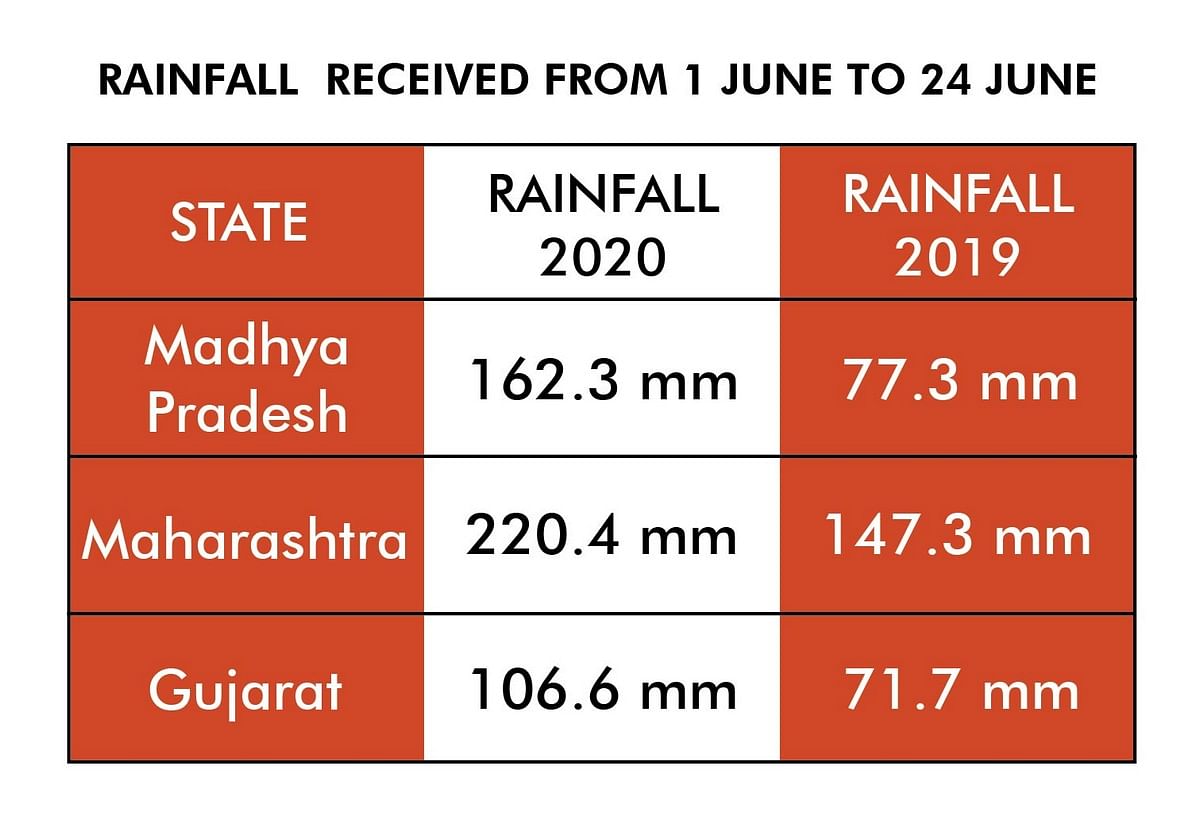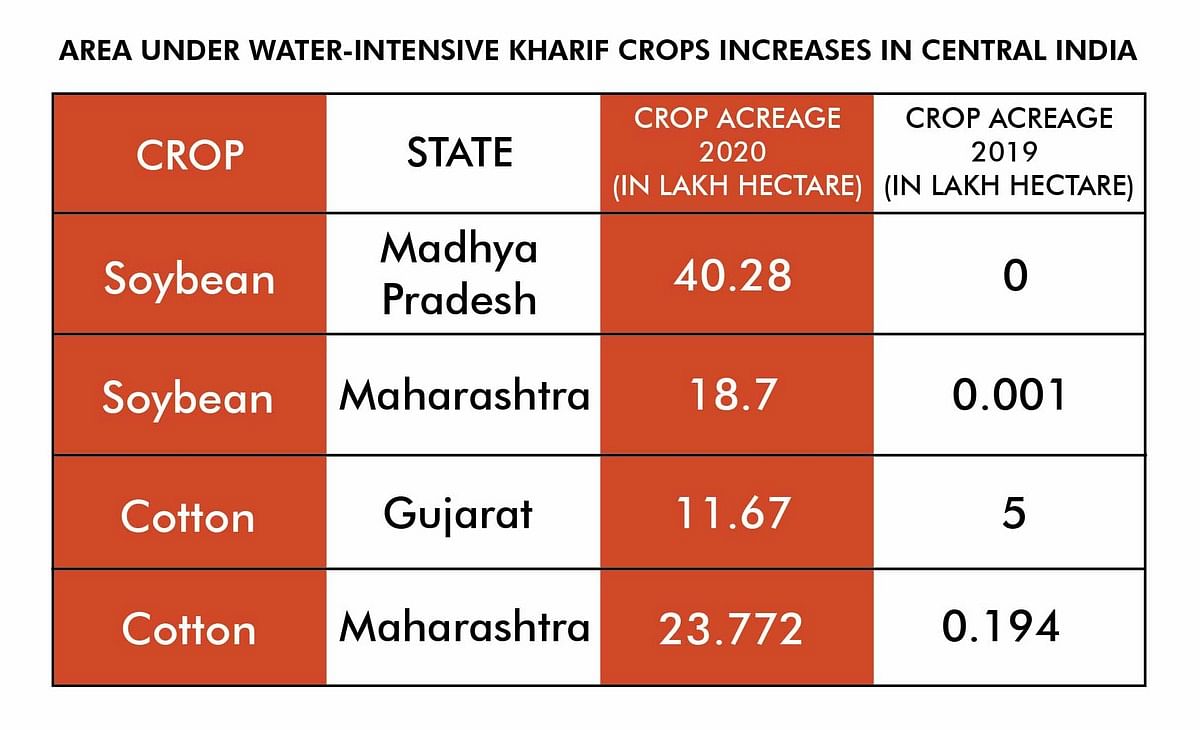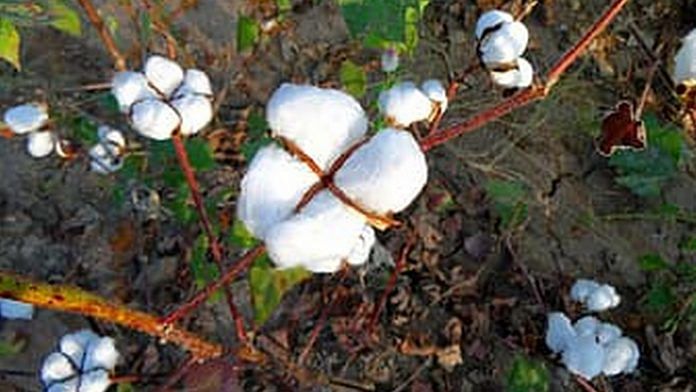New Delhi: Thanks to above-normal pre-monsoon rainfall in June in many states, the sowing of kharif crops across the country has more than doubled over last year.
According to estimates from the Ministry of Agriculture, the area sown this year is 315.63 lakh hectares (lha), up 104.25 per cent from last year’s 154.53 lha, because more water-intensive crops like cotton and soybean are being sown this time.
According to the Indian Meteorological Department (IMD), the country has received 22 per cent more rainfall than normal between 1 and 26 June — 165.1 mm against 135.66 mm in the corresponding period last year. Rainfall in central India, including Madhya Pradesh, Gujarat, the Marathwada and Vidarbha regions of Maharashtra, Chhattisgarh and Odisha, was 44 per cent higher than last year.
This has resulted in reservoir storage across the country on 25 June standing at 56.72 billion cubic metres (BCM), against 29.16 BCM last year, while in central India, the corresponding figures are 17.21 BCM and 9.10 BCM respectively.
Also read: Tomatoes cost Rs 70/kg from Rs 4/kg a month back due to early monsoon & supply shortage
Water-intensive crops
According to Water Productivity Mapping of Major Indian Crops by NABARD, the five crops grown in India that require the most water are cotton, rice, soybean, sugarcane and wheat. Cotton in India uses the most water — 22,500 litres to produce 1 kg — with the drier regions of Gujarat and Maharashtra being its leading producers. Soybean requires 900 litres of water for 1 kg produce, and is grown primarily in Madhya Pradesh and Maharashtra.
This year, MP received 162.3 mm of rainfall between 1 and 24 June, more than double the normal 77.3 mm, while Maharashtra received 220.4 mm compared to the usual 147.3 mm over the corresponding period. In Gujarat’s case, the corresponding figures were 106.6 mm and 71.7 mm respectively.

This has resulted in MP’s acreage for soybean increasing to 40.28 lha from nil last year, while in Maharashtra, it has shot up to 18.7 lha from last year’s 0.001 lha.
Cotton sowing has also spiked in Maharashtra to 23.772 lha as on 25 June this year from last year’s 0.194 lha, while in Gujarat, the figures are 11.67 lha this year and 5 lha last year.

Other water-intensive crops like paddy and sugarcane have also seen growth — paddy rising to 37.71 lha from 27.93 lha last year, and sugarcane inching up to 49.69 lha from 49.09 lha.
The sowing of pulses is also up to 19.40 from 6.03 lha, with arhar being grown on 9.87 lha (1.83 in 2019), urad on 2.75 lha (90,000 lha in 2019) and moong on 5.30 lha (last year 2.06 lha) of land.
Experts cautious
Bhagwan Meena, the MP-based convener of farmer body Kisan Swaraj Sangathan, told ThePrint: “The rainfall here is more than anything we have witnessed in the last 10 years. Monsoon has arrived 8 days before normal.”
However, Meena added that the rainfall has also caused a series of problems.
“Many farmers have lost their crops due to waterlogging for days in their field. My 20-acre field is still not ready to sow soybean as there has been continuous rain for the last four days in my area,” he said.
Meanwhile, Arabinda K. Padhee, country director of the International Crops Research Institute for the Semi-Arid Tropics, advised caution.
“The sowing of crops, especially the water-intensive ones, might increase with the early rainfall, but the yield and productivity of these crops are really dependent on the rains in July. There is a need to be really careful with the increasing sowing of these crops as both cotton and soybean are commercial crops and their prices depend on the market status, which is really unpredictable these days,” Padhee told ThePrint.
He added: “The sowing of coarse cereals and millets like ragi and jowar should be promoted owing to its nutritional value. The support price of these crops should be raised, as compared to other crops.”
Also read: Locust swarms spare Delhi but threaten Rs 40,000-crore sugarcane economy in UP



